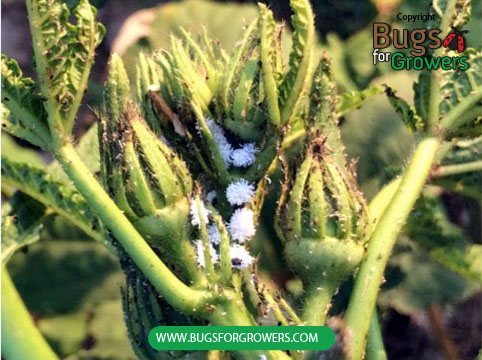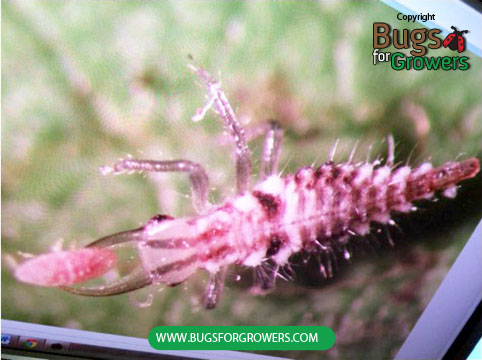Damage caused by Mealybugs
Mealybugs are one of the most damaging insect pests of many fruits, field and greenhouse crops. While feeding, all the stages of mealybugs attach to plant parts and secrete a white powdery wax layer that gives them their common name and cover their entire bodies for protection (Photo 1). Like other hemipterous insects, mealybugs cause serious damage to plants by sucking cell sap from all the plant parts including leaves, twigs, stems, flowers, fruits and roots. Symptoms of direct damage caused by mealybugs include irregular and stunted plant growth, yellowing and immature drop off leaves. Indirect damage caused by mealybugs includes secretion of sticky honeydew on the leaves and stems that helps to develop black sooty mold on the leaves. This black sooty mold generally covers whole leaf area and badly affects the photosynthesis, a process used by plants to convert light energy from sun to chemical energy for the synthesis of their own food including carbohydrates and proteins. This black sooty mold also reduces the quality of the produce and aesthetic value of many ornamental plants. In addition, mealybugs are known to transmit different types of viruses from plant to plant.

Biological control of Mealybugs
As the use of chemical pesticides is avoided due to their detrimental effects on humans, animals and environment, the control of mealybugs with beneficial insects is essential to reduce the crop losses caused by them in organic productions. Among the several natural enemies, green lacewings (Chrysopa carnea or Chrysoperla rufilabris) considered as one of the most aggressive predators of many soft- bodied insects like whitefly larvae, scale insects including mealybugs. Green lacewing generally feed on nectar, pollen and honeydews whereas their larvae feed on all the stages of mealybugs. Although green lacewings are commercially sold in three developmental stages including eggs, larvae and adults, only larval stages are predatory in nature (Photo 2). Place eggs of green lacewings directly in the garden but make sure that egg hatching coincides with the outbreak of mealybugs so that the hatched larvae can immediately start feeding on the different stages of mealybugs. For quick control of mealybugs, larvae of the green lacewings should be released on the heavily infested plants. Adults of green lacewings should be released for their continuous recycling and mealybug control.

Research Papers
- Duelli P. 1980. Preovipository migration flights in the green lacewing, Chrysopa carnea (Planipennia, Chrysopidae). Behav. Ecol. Sociobiol. 7:239–246
- Goolsby, J.A., Rose, M., Morrison, R.K., Woolley, J.B. 2000. Augmentative biological control of longtailed mealybug by Chrysoperla rufilabris(Burmeister) in the interior plantscape. Southwest Entomol 25:15–19.
- Messelink, G.J., Vijverberg, R., Leman, A. J. 2016. Biological control of mealybugs with lacewing larvae is affected by the presence and type of supplemental prey. BioControl 61: 555- 565.
